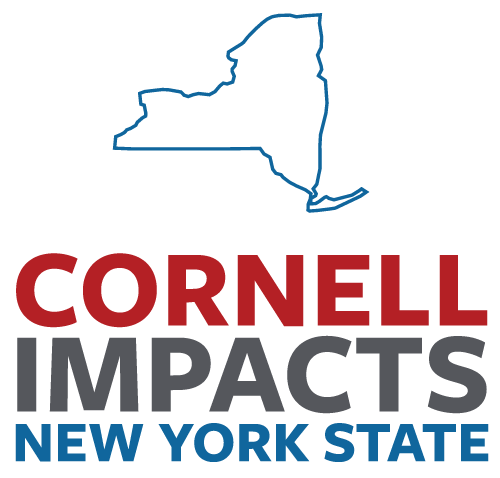News and guidance on avian influenza is scattered across government and state agency websites, and rampant misinformation is spread across the internet. In response, Cornell has launched a comprehensive resource that offers a one-stop clearinghouse for the most current and trustworthy information on bird flu.
A new online Avian Flu Resource Center provides reliable and accessible information for members of the general public, farmers, wildlife professionals, state and public health agency partners, and veterinarians.
"We've tried to make it easy for people to go right to whatever their main interest may be; whether it's human health, wildlife health, dairy, poultry, cats or dogs, they can readily access what they want," said Alex Travis, director of Cornell Public Health and chair of the Department of Public & Ecosystem Health in the College of Veterinary Medicine (CVM).
"We've got world-class experts in all of those areas working day and night to keep people and their animals safe," Travis said. Such expertise includes everything from running diagnostic tests on milk and wildlife samples to mapping the virus's spread in wildlife, to teaching people how to prevent sickness, to improving diagnostics and conducting research, he said.
The current strain of bird flu, also known as Highly Pathogenic Avian Influenza, first appeared in North America in November 2021 and was identified in New York state in 2022 in a sample submitted for testing to the Animal Health Diagnostic Center. It has since spread - often by wild birds (especially waterfowl) - to dairy cattle, poultry, domestic cats, many species of wildlife and 68 people to date, though there is no evidence of person-to-person transmission. Infected raw cow milk has been a source of infection mainly to people and cats.
The resource center provides an avian influenza fact sheet; links to Centers for Disease Control and Prevention, and U.S. Department of Agriculture avian flu sites; and pages for those interested in taking a deep dive into current information on human health, wildlife, dairy, poultry, cats and dogs, and research.
When it comes to wildlife, the new resource center aims to fill an important gap in providing information on different species.
"Because the virus can be transmitted between wildlife, poultry and cattle, it is important to have one place where you can get all that information" said Krysten Schuler, assistant research professor in the Department of Public & Ecosystem Health and director of the Cornell Wildlife Health Lab in CVM.
"Cornell is able to update maps of where the virus is found in wildlife based on results that we're generating in-house at the Animal Health Diagnostic Center," Schuler said. "Being timely with the information is important to let people know about wildlife health and risks of exposure to themselves, their pet cats, and their livestock."
The Cornell Wildlife Health Lab maintains key partnerships with the New York State Department of Environmental Conservation, the NYS Department of Agriculture and Markets, the NYS Department of Health and New York City Health, all of which help Cornell provide the most current updates, Schuler said.
Overall, HPAI has been a concern for public health professionals due to its staying power, as it has circulated in the U.S. for a number of years. "It hasn't come in and then burned itself out and disappeared in a few months," Travis said.
With regard to humans, one concern is that HPAI could infect a person who has simultaneously caught a regular seasonal flu.
"There's a risk that the genetic material of those two different flu viruses can mix, and then you can get a new strain that suddenly has different properties," such as the potential for human-to-human transmission, Travis said.
People can reduce risks by avoiding raw milk and products made from raw milk, protecting farm workers in close contact with animals, limiting domestic poultry's and pets' access to wild animals, and avoiding contact with dead birds. The resource center also links to an in-depth Cornell Lab of Ornithology web page that answers key questions about whether bird feeders might be a source of infection.







